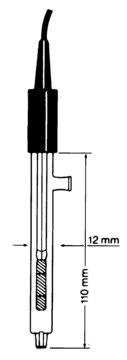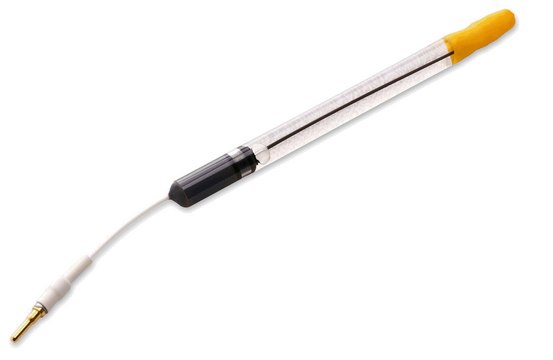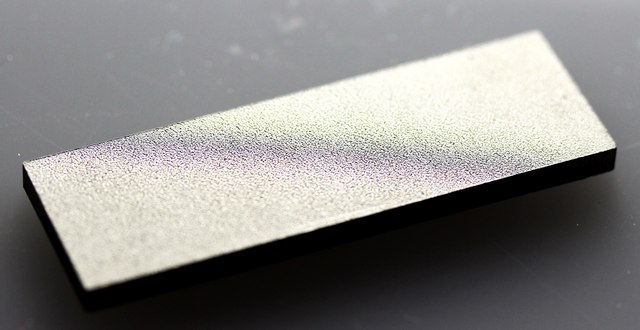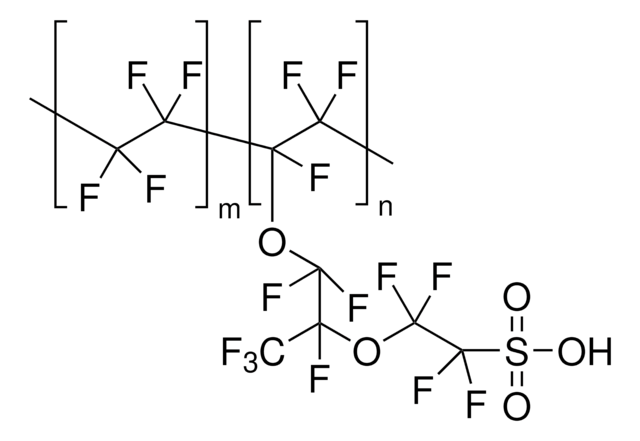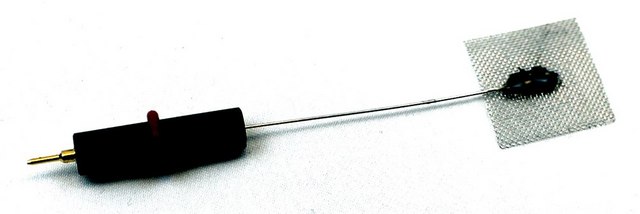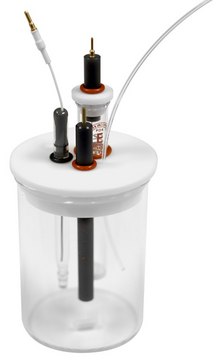929891
Alkaline Reference Electrode
Synonym(s):
EF-1369
About This Item
Recommended Products
Application
It has a 6mm O.D. making it compatible with all BASi cell stands and cell tops. The 1M NaOH filling solution is not included and must be prepared and added onsite.
Instructions for assembly, caution instructions and how to keep:
1) Assembly
(i) Unscrew an electrode main body(a) from an electrode holder(c). For assembling, please use rubber gloves, as shown in the photo.
(ii) Remove a protective cap(b) from the electrode main body(a) gently and wash a tip of the electrode main body(a) with ion-exchanged water.
(iii) Fill the internal solution (1 M NaOH) up to the level that the tip of the electrode main body(a) is sufficiently immersed. If you see air bubbles in the electrode holder(c), remove the bubbles by shaking the electrode holder(c). The air bubbles may cause the incorrect electrode potential.
(iv) Insert the electrode main body(a) to the electrode holder(c) securely. Remove the internal solution a little if it overflows from the electrode holder(c).
(v) Before use, soak the electrode in an identical solution with the internal solution (1 M NaOH) for a day to stabilize the electrode potential.
(vi) The electrode potential can be checked with an electrometer and a typical reference electrode. (Ag/AgCl) in the same solution as the internal alkaline solution. The electrode potential against the Ag/AgCl is -80 mV ± 20 mV (25 °C) with 1 M NaOH.
2) Caution instructions
(i) The electrode main body(a) contains hazardous agents. Be careful handling. At the time to discard the internal solution after final usage, please comply with the local government′s law.
(ii) Do not remove the label of electrode main body(a). The label is required for any case of inquiry.
(iii) Please be careful about removing the protective cap(b) from the electrode main body(a). If a white ceramics is removed, the hazardous agents may leak out.
(iv) The electrode is for an alkaline solution measurement. Do not use in organic solvent.
(v) Use the electrode at room temperature and atmospheric pressure.
(vi) Avoid a strong shock to the electrode.
(vii) Don′t disassemble the electrode main body(a). If disassemble it. we cannot warranty.
(viii) The electrode has individual difference and it is sensitive to the temperature. in some cases the electrode potential may not coincide with theoretical value.
(xix) KOH internal solution (up to 6M) is also applicable to this electrode.
3) How to keep
After use, wash the tip of the electrode with ion-exchanged water, soak it in 1 M NaOH solution and keep it in a cool dark place. If you don′t use for a long lime, disassemble the electrode. Wash the tip of the electrode body(a) with ion-exchanged water, wipe off the water, attach the protective cap(b) and keep it in a cool dark place. Replace the internal solution of the electrode holder(c) with ion-exchanged water, soak the tip of the electrode holder(c) in ion-exchanged water and keep it in a cool dark place.
Keep the reference electrode in a cold dark place.
Legal Information
Signal Word
Danger
Hazard Statements
Precautionary Statements
Hazard Classifications
Acute Tox. 1 Dermal - Acute Tox. 2 Inhalation - Acute Tox. 3 Oral - Aquatic Acute 1 - Aquatic Chronic 1 - Repr. 1B - STOT RE 1
Storage Class Code
6.1B - Non-combustible acute toxic Cat. 1 and 2 / very toxic hazardous materials
WGK
WGK 3
Flash Point(F)
Not applicable
Flash Point(C)
Not applicable
Regulatory Information
Choose from one of the most recent versions:
Certificates of Analysis (COA)
It looks like we've run into a problem, but you can still download Certificates of Analysis from our Documents section.
If you need assistance, please contact Customer Support.
Already Own This Product?
Find documentation for the products that you have recently purchased in the Document Library.
Our team of scientists has experience in all areas of research including Life Science, Material Science, Chemical Synthesis, Chromatography, Analytical and many others.
Contact Technical Service
